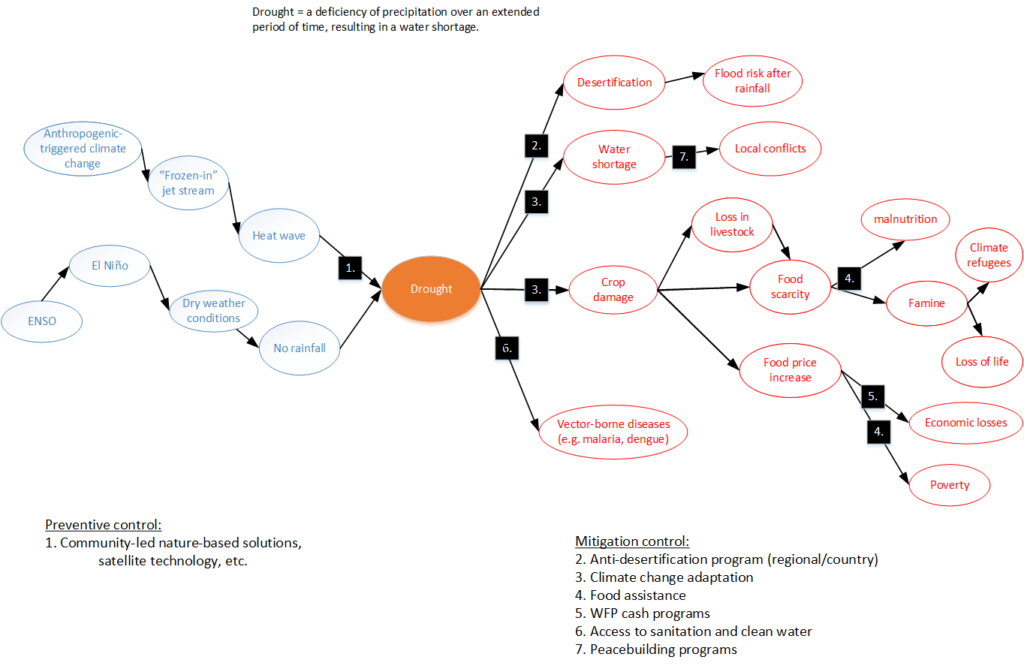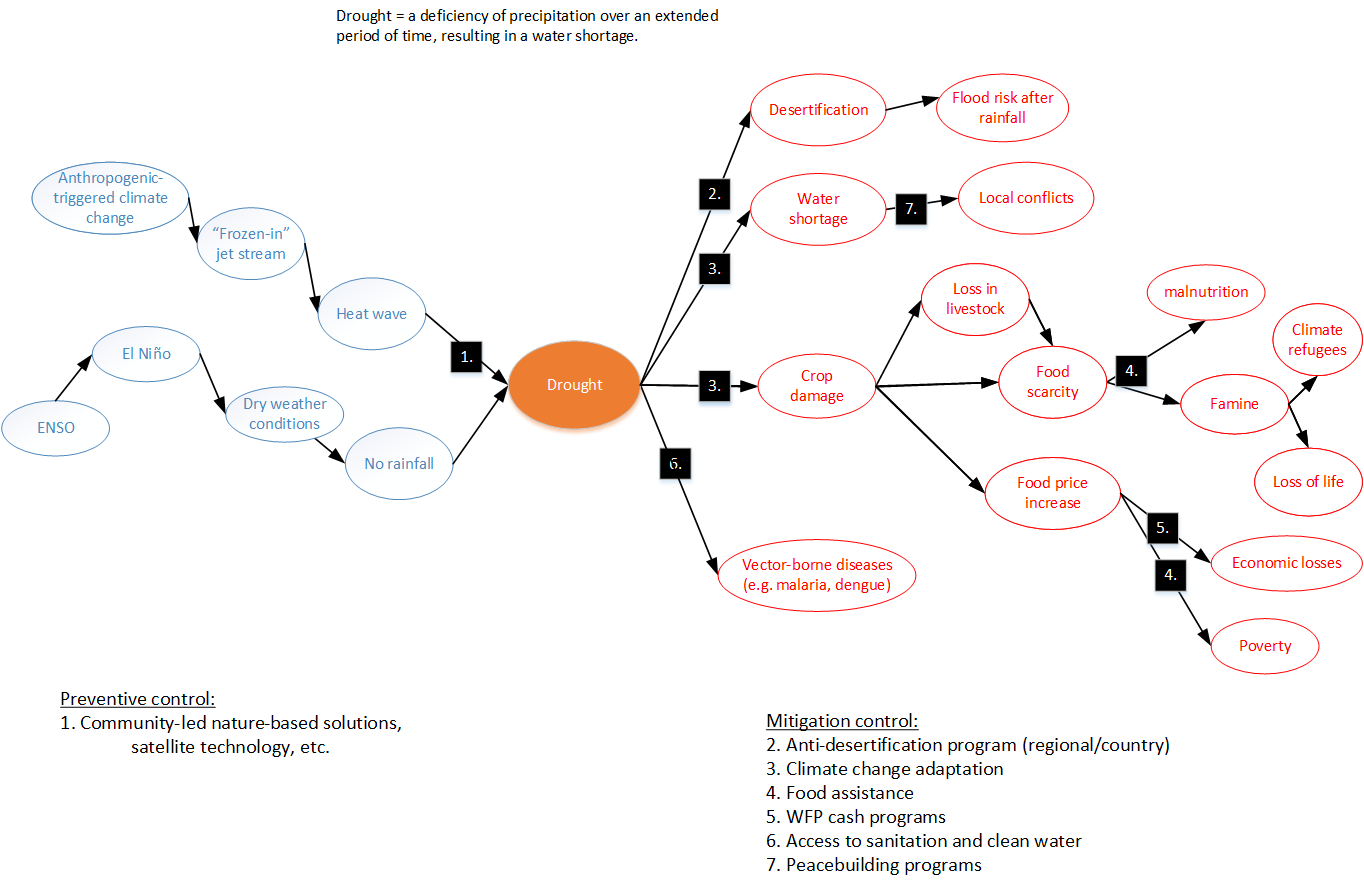Analyzing natural disasters impacting food security
December 2021
(You can download the full paper at the bottom of this page.)
According to the World Food Programme (WFP) more than 80% of the world’s food-insecure people live in settings that are prone to climate-related disasters, such as floods, droughts and storms. With climate change, these populations are more likely to slip back into hunger as a result of more frequent and severe disasters. To support vulnerable countries and communities, WFP provides analysis highlighting the links between natural disasters and food security, as well as the present and future impact of climate change on food security and nutrition.
Although much information is available, the problem with performing disaster risk assessments is that many disasters are not attributed to the root causes. Another problem is that information about risks are often not easily understandable and are not clear enough on the cause-effect chain of probable natural disasters and its consequences. This can lead to a lack of trust in risk assessments and therefore an impact on cooperation with national or local stakeholders.
To overcome these problems, I propose the use of Bowtie Diagrams. This methodology provides new means to experts and nonspecialists to better understand the dynamics behind natural disasters and their impact on food security.

Please find the full paper here: FP Cuijpers – Bowties for Natural Disaster Risks
Comments and donations are all appreciated!

Thanks!